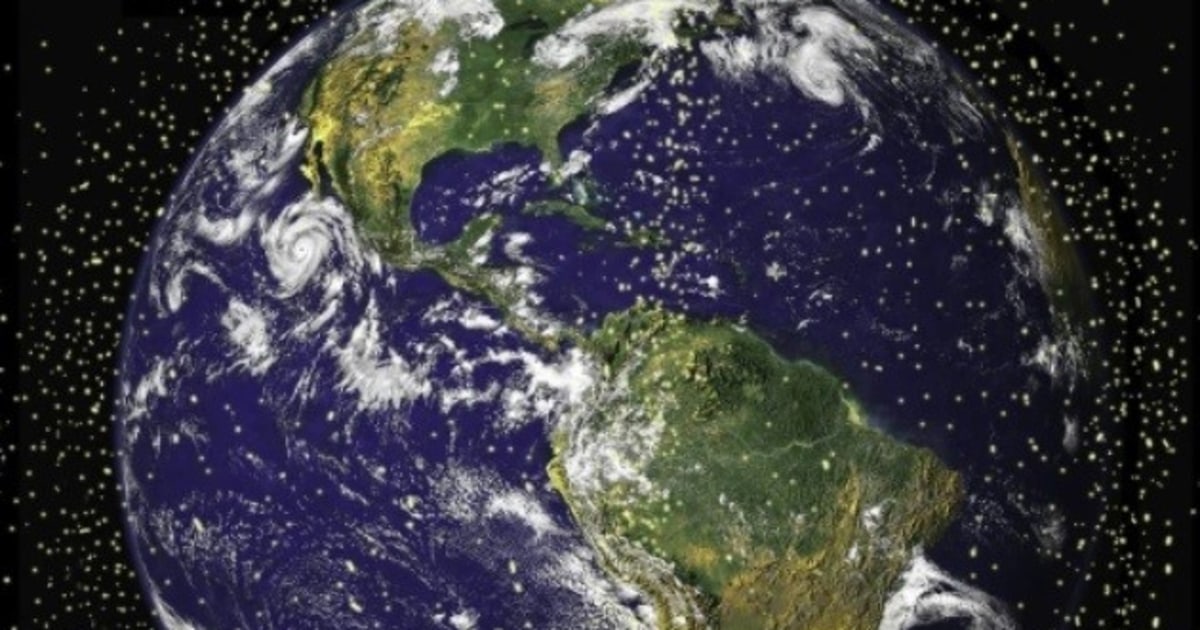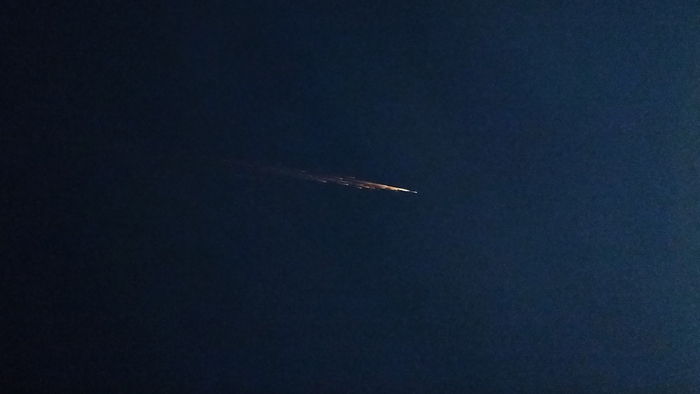By Tom
Metcalfe
The US government is taking legal action to limit the amount of space debris - the cloud of hazardous waste that continues to orbit the Earth - after more than six decades of space races, rocket launches, planetary missions and booming satellite activity.
The key measure is the imposition, last week, by the Federal Communications Commission, of a useful life of five years for the new satellites once they have completed their mission, at which point they will have to leave orbit and be consumed. in the earth's atmosphere.
[Why has it taken NASA half a century to try to return to the Moon?]
Until now, the useful life was 25 years, but it had never been legally applied.
The new rule only applies to satellites launched by US operators, and will not by itself solve the space debris problem.
But experts agree it's a good start and in line with international efforts.
This is the ghost galaxy that is 34 million light years from planet Earth
Aug. 31, 202200:18
"It's about setting rules for space and having a legal framework that people have to adhere to," explained space debris expert Carolin Frueh, an associate professor of aeronautical and astronautical engineering at Purdue University in West Lafayette, Indiana.
"It's a big step," she added.
Earth's orbital space is immense, and there are only about 5,000 active satellites.
But it's estimated that there may be millions of pieces of space debris floating around our planet: from entire rocket stages, which can weigh several tons, to inactive satellites, missing pieces of space equipment, missing nuts and bolts, and broken shards from orbital collisions. .
[NASA records the chilling sound of a black hole for the first time]
Most of these pieces are tiny, smaller than a nickel.
But they orbit at more than 15,000 miles per hour (24,140 kilometers per hour), and experts estimate there are about 30,000 pieces of space junk big enough and fast enough to be a serious problem — and potentially a disaster.
There have already been some close cases.
In June, the International Space Station changed its orbit to avoid debris from a Soviet-era satellite that had exploded in a Russian test of a new antisatellite missile.
So far, the ISS has had to avoid orbiting space debris more than 30 times during its 23-year mission.
It has also been damaged by space debris, and on another occasion the ISS crew was prepared to leave in the event of a collision.
Artist's rendering of debris and satellites in orbit around the Earth. NASA
And the problem will get worse.
One report estimates that there will be an additional 10,000 pieces of hazardous space debris in orbit by the end of this century.
"Space debris is not yet at a stage where we can no longer carry out space missions," says Thomas Schildknecht, professor of astronomy at the University of Bern, Switzerland, and director of the Zimmerwald Observatory.
"But the risk is increasing, and if we don't pay attention, 10 years from now we'll be at the level where we can't do anything."
Schildknecht's team has been tracking the most dangerous pieces of space junk for several years and now uses lasers to track their trajectories.
In addition to predicting dangerous collisions, astronomers use their database to schedule observations when their vision won't be interrupted by stray space debris.
[It took 8 telescopes around the world to capture the first image of the Milky Way's black hole]
“We get accurate information so we can tell astronomers when something is flying by, so they can choose their observing times a little bit differently,” he said.
"It's already a problem."
The Schildknecht database is one of the sources consulted by commercial space companies such as COMSPOC, a Pennsylvania-based company that, among other things, offers to keep satellite operators informed of any threats in their orbits, including space junk, so they can avoid it if possible.
The company's chief scientist, Dan Oltrogge, said he welcomes the new five-year term from the Federal Communications Commission (FCC) and believes it could be even stricter.
He noted that the rule will not affect new constellations like Elon Musk's SpaceX Starlink - a network of thousands of satellites to provide internet almost anywhere in the world - because those satellites are already in a low orbit and are expected to deorbit later. of a year
['Crypto-art' opens up new opportunities for artists. One of them says that he sold “a .jpg for 18,000 pesos”]
“They are showing that not only do you have to do it in five years, but you have to do it much better than that,” he said.
Many experts believe that the only solution to the space junk problem will be to send robotic spacecraft to collect it all and de-orbit it for good.
It will take several weeks to find out if NASA's DART mission managed to deflect an asteroid
Sept.
27, 202200:37
Japanese
startup
Astroscale captured a simulated piece of space junk in a test last year and has a deal with satellite constellation operator OneWeb to deorbit its satellites.
In 2019, the European Space Agency selected the private company ClearSpace to remove objects from orbit using a robotic spacecraft with large claws.
Testing is expected to begin in orbit in 2026.
[Planet Earth: Search for this giant tortoise after evidence that the species has not disappeared]
And Seattle-based
startup
Starfish Space is developing a space tug called the Otter to service orbiting satellites and push space debris into low orbits where it will fall to Earth.
The company hopes to launch it in 2024.
These types of active steps are also a key part of an ORBITS bill that would require NASA and the space industry to explore new solutions to space debris problems.
Purdue's Frueh suggested that another solution to space debris problems would be not to leave debris in orbit to begin with.
"Moving in the direction of active removal is what we need," he said.
“But it will not be an isolated measure.
We also need to design our missions with space debris issues in mind, and shoot things down as soon as possible after a mission," he concluded.








/cloudfront-eu-central-1.images.arcpublishing.com/prisa/RIQQXVYJMFETZBCNMM4JS7QSE4.jpg)
